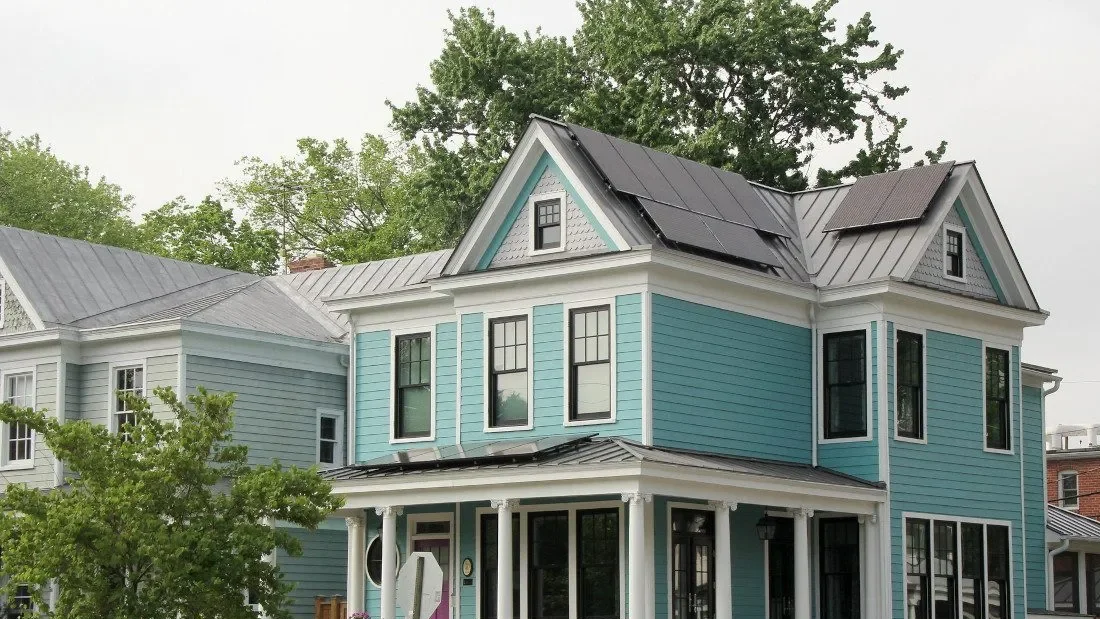
Newly empowered Virginia Democrats are pushing legislation this session that would elevate the role of customers and private developers in meeting the state’s clean energy targets.
A chief aim of the ARC bill — shorthand for Affordable, Reliable and Competitive — is to significantly expand the amount of power generated by less expensive, third-party solar and onshore wind projects in the service territories of both Dominion Power and Appalachian Power.
After legislators green-lighted the bold Virginia Clean Economy Act (VCEA) in 2020, regulators capped those types of projects at 35% of an investor-owned utility’s renewable energy portfolio.
Backers of the ARC legislation, House Bill 638 and Senate Bill 230, are calling for that 35% to act as a floor rather than a ceiling.
“We know the market can support at least 35%,” said Nate Benforado, senior attorney with the Southern Environmental Law Center. “We’re not saying the new target should be 100%. Whatever the number is, it’s best left to the discretion of the State Corporation Commission.”
Benforado’s organization collaborated with policy specialists at organizations including Advanced Energy United and the Sierra Club to shape the ARC legislation. They expect the proposal — with its emphasis on increasing market competition and lowering costs — will attract Republican supporters on its way through the General Assembly.
“This is one of those issues that is bipartisan,” he said about adjusting the existing statutory framework to escalate growth of renewables.
Briefly, the VCEA requires Dominion to incrementally meet a goal of 100% clean energy generation by 2045. Targets for 2025 and 2035 are 26% and 59%, respectively. Appalachian Power is supposed to follow suit by 2050.
Del. Rip Sullivan, a Fairfax County Democrat, is the patron of HB 638, while Sen. Ghazala Hashmi, a Democrat representing the Richmond region, is sponsoring the upper chamber version.
Just days after the legislative session convened on Jan. 10, Sullivan told attendees at a Virginia Grassroots Coalition online gathering that he was reluctant to attempt to tweak the VCEA until Democrats again regained majorities in both chambers.
That happened during the November election when Democrats held on to a slim majority in the Senate and flipped the House back to their control. Still, narrow vote margins mean they don’t have the supermajorities necessary to override vetoes or enact new laws that Republican Gov. Glenn Youngkin opposes.
Sullivan’s bill would also require the two large utilities to allow a fivefold increase in the percentage of distributed energy generated by small-scale solar and solar storage projects.
Solar installers are on the verge of exceeding the 1% renewable portfolio limit included in the VCEA because of customer demand for closer-to-home energy.
Bumping that upward to 5% is an incentive to let Virginia unlock the lowest-cost path to clean energy because it veers away from a utility-only approach, said Robin Dutta, acting executive director of the Chesapeake Solar & Storage Association.
His organization represents renewable energy developers in Virginia, Maryland, Delaware and the District of Columbia.
“There’s a huge climate argument for distributed generation,” Dutta said. “By lowering peak (energy) demand as much as possible, utilities don’t have to build out the grid with transmission lines and other infrastructure.”
The legislation would allow local, small-scale projects — which include rooftop solar, community solar and related storage — to be as large as 3 megawatts. That triples the current 1 MW cap.
Inviting the private sector to play a larger role not only drives technical innovation, but also lets non-utility entities and regular ratepayers be armed with their own power generation, Dutta said.
He praised Sullivan’s bill for folding in a pair of renewable stalwarts — third-party-owned solar projects and distributed energy — that green the grid and protect affordability for ratepayers.
“Those two pieces move the ball forward in two different ways,” Dutta said. “And that leads to a more equitable clean energy transition for ratepayers.”
One advantage of distributed generation is that solar panels aren’t covering acres of farmland, Benforado said. Instead, projects are sited near the people using the renewable energy, which avoids costly transmission and distribution upgrades.
Despite industry enthusiasm, Dominion Energy has a “number of concerns with the legislation” and is “working with the sponsor to hopefully address some of them,” utility spokesman Aaron Ruby told the Energy News Network.
The utility’s most pressing issue revolves around raising the distributed solar carve-out. Dominion claims that boosting it to 5% would require the utility to buy renewable energy credits from roughly 3,700 megawatts of distributed solar projects by 2048.
That is “completely unrealistic,” Ruby said, adding that adhering to the increase would cost Dominion about $260 million in penalties annually for being out of compliance with the incremental renewable energy goals laid out in the VCEA.
Ruby explained that Dominion has lowered customer electricity rates significantly and is more than a year ahead of schedule on meeting its renewable energy requirements.
“This legislation heads in the opposite direction on both scores,” he said. “You’ve heard the old saying, ‘If it ain’t broke, don’t fix it.’ I’d go even further. If it’s working, don’t break it.”
Third-party solar developers in Virginia — and elsewhere — usually engage in a mutually beneficial arrangement known as a power purchase agreement, or PPA for short, to help customers meet sustainability goals.
Generally, those deals allow the builder to install, own and operate the energy system on land the customer owns. The customer receives stable, often low-cost electricity with no upfront cost for a predetermined length of time, which enables the owner to take advantage of tax credits and earn income from the sale of electricity.
Environmental advocates maintain that solar projects built, operated and maintained by third parties are less expensive than those coordinated by utilities. For one, utilities receive a return on equity for capital expenditures and project costs are then passed on to ratepayers.
However, third-party builders are not only competing for business but investing their own capital, which means they assume all financial risks. That alone is incentive enough to deliver a successful project at a reasonable cost.
“With the Clean Economy Act, we have a path and a structure to improve the affordability of this transition to clean energy,” the SELC’s Benforado said. “We don’t want to see lower-cost options for customers dismissed because of a 35 percent cap.”
He pointed to testimony presented last January to utility regulators by Gregory Abbott on behalf of Appalachian Voices, an environmental nonprofit. Abbott, who had recently retired from the SCC after 24 years in the commission’s Division of Public Utility Regulation, was commenting on a case involving Dominion’s renewable energy portfolio.
Abbott stated that third-party-owned solar projects are a more affordable and “attractive option for captive customers” because of lower risks associated with performance and project development
Abbott also noted that Dominion has consistently left lower-cost, third-party solar projects out of its renewable energy mix because of its interpretation of 35% as an exact number instead of a suggestion.
On the Senate side, the bill has been referred to the full Labor and Commerce Committee. Over in the House, it was in front of a Labor and Commerce subcommittee as of Jan. 16.
“Virginia’s curve is headed up when it comes to renewables and clean energy,” said Sullivan, the House sponsor. “Despite what you may be hearing from some quarters, we can and should be on track to meet our goals. Having said that, we need to do better, we need to do it faster and we need to do more.”
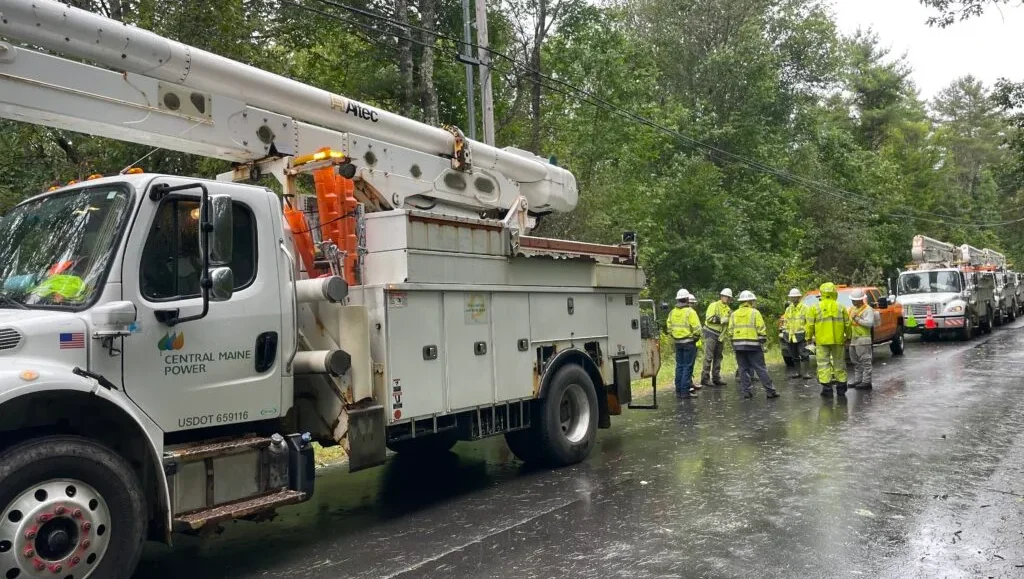
UTILITIES: Following the defeat of a ballot measure to replace Maine’s investor-owned utilities with a consumer-owned power company, policymakers and advocates explore new ways to improve service. (Maine Morning Star)
POLICY:
WIND:
GRID: Utility crews mobilize and New Jersey’s governor declares a state of emergency ahead of a “powerhouse” rain and wind storm expected to sweep the Northeast tonight. (WHAM, NBC 5, NorthJersey.com)
ELECTRIC VEHICLES: Massachusetts and Connecticut are set to receive enough federal funds to respectively purchase 85 and 50 electric school buses apiece. (Worcester Telegram & Gazette, CT Mirror)
SOLAR: In Northfield, Massachusetts, an almost 11 MW solar project makes installation progress as it resumes development following the end of an appeal of the local planning board’s decision. (Daily Hampshire Gazette)
NUCLEAR: New Hampshire and Massachusetts legislators request a public forum as they question a proposed consolidation of NextEra’s emergency management plan at the Seabrook plant and other nuclear stations it operates. (In-Depth NH, New Hampshire Bulletin)
BUILDINGS: A new social media campaign launched by New York City teenagers encourages the mayor’s office to accelerate school building retrofits. (Gothamist)
CLIMATE:

CLIMATE: The U.S. Supreme Court denies six fossil fuel companies’ request to move the Minnesota attorney general’s climate lawsuit to federal court, keeping the case at the state level. (Star Tribune)
CLEAN ENERGY:
POLITICS: The former Ohio Republican Party chairman wants to have his conviction in the state’s largest bribery scandal thrown out, saying government officials abused their charging and prosecuting power. (Cincinnati Enquirer)
PIPELINES: About 200 landowners gather in South Dakota’s capital to call on lawmakers to pass bills preventing the use of eminent domain for carbon pipelines and allowing counties to set local siting restrictions. (South Dakota Searchlight)
GRID: Indiana utility NIPSCO and a chemical company will pay $66.7 million to settle charges related to manipulating grid operator MISO’s demand response program. (Utility Dive)
SOLAR:
POWER PLANTS:
OIL & GAS: Longtime scientist and advocate Sandra Steingraber says researchers have an obligation to speak on hydraulic fracking’s links to environmental health problems, and likens well sites as “these sort of giant cigarettes in the earth.” (Inside Climate News)
STORAGE: A subsidiary of LG Energy Solution plans to build 10 grid-scale battery storage projects in the U.S. this year following the passage of the Inflation Reduction Act. (Utility Dive)
HYDROGEN: Industry groups say the Biden administration’s proposed rules for a hydrogen production tax credit would kneecap the nascent industry while environmental groups say they are needed to keep emissions in check. (States Newsroom)

SOLAR: Hawaii advocates say lower payments for customers’ excess rooftop solar could incentivize customers to only install arrays for their own use and avoid exporting to the grid, imperiling the state’s energy transition. (Hawaii Public Radio)
WIND: A nonprofit seeks additional historic protections for a World War II Japanese incarceration camp in Idaho, with a goal of halting the proposed Lava Ridge Wind Project. (Boise State Public Radio)
CLEAN ENERGY: Alaska lawmakers are set to consider bills related to community solar, sustainable energy loans and clean energy standards for utilities this legislative session. (Alaska Public Media)
OIL & GAS:
COAL: Wyoming considers partnering with a mining company to explore using coal in asphalt. (Cowboy State Daily)
ELECTRIFICATION:
NUCLEAR: Oregon small modular nuclear reactor startup NuScale says it laid off 154 workers as part of its shift from its research phase to commercialization of its technology. (Oregonian)
ELECTRIC VEHICLES:
GRID:
CRITICAL MATERIALS: The U.S. Supreme Court rejects Alaska’s bid to review the U.S. EPA’s denial of the proposed Pebble copper and gold mine, dealing a blow to the state’s efforts to revive the project. (E&E News)
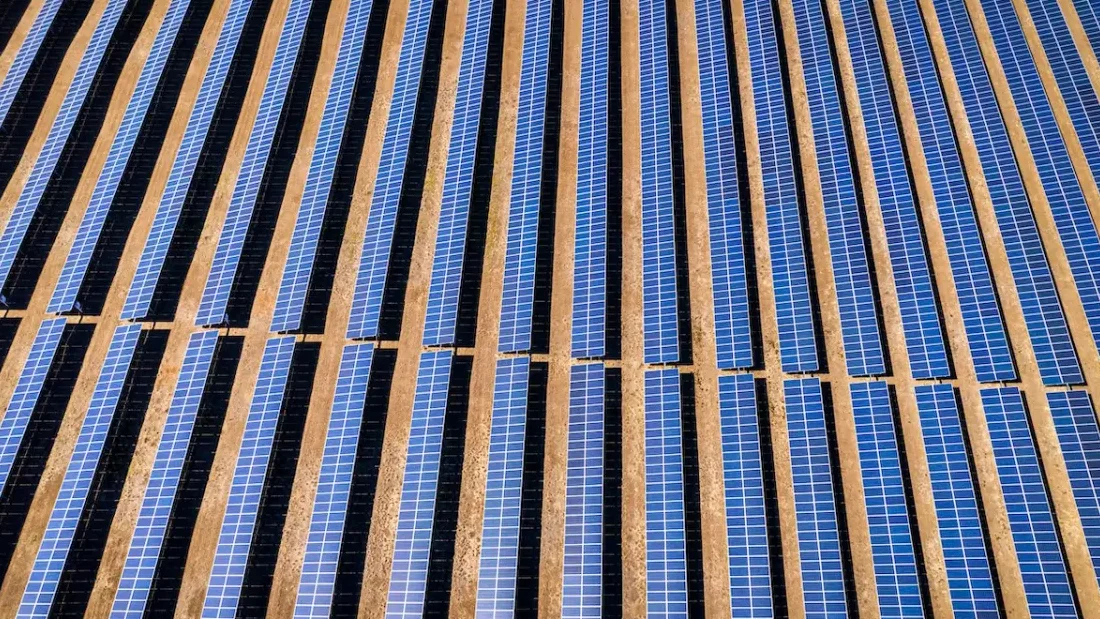
STORAGE: Developers bring a 185 MW battery energy storage installation online in Hawaii to replace the capacity and grid services formerly provided by a shuttered coal plant. (Canary Media)
ALSO:
SOLAR:
WIND: Developers break ground on the SunZia wind project in New Mexico, set to be the biggest wind facility in the Western Hemisphere. (Associated Press)
OIL & GAS:
NATURAL GAS: A New Mexico utility says it needs to build a controversial natural gas storage facility on a city’s outskirts to ensure reliability, but residents worry about safety. (NM Political Report)
CLEAN ENERGY: A Nevada county votes to oppose proposed lithium mining operations near a wildlife refuge and solar developments on federal lands, saying they could strain diminishing water supplies. (Nevada Current)
URANIUM: Wyoming officials say rising commodity prices led to a uranium production uptick last year following a long period of industry near-dormancy. (WyoToday Media)
CLIMATE: Colorado advocates push back on a university’s plan to upgrade heating and power equipment, saying it isn’t enough to slash carbon emissions. (Colorado Newsline)
ELECTRIC VEHICLES:
GRID:
COMMENTARY: A Hawaii lawmaker urges the state to file a lawsuit against the fossil fuel industry to hold it accountable for its contributions to climate change. (Honolulu Civil Beat)

GEOTHERMAL: Boston’s mayor briefly mentions a major new utility project in her State of the City speech: the city’s first networked geothermal heating and cooling system, to be developed by National Grid in the Franklin Field neighborhood. (WCVB)
BUILDINGS: In her annual speech, Boston’s mayor also announced a new program to ban new city-owned buildings from using fossil fuels. (Boston Globe)
GRID:
FOSSIL FUELS: PJM Interconnection wants Talen Energy to postpone the planned decommissioning of two units at a 840 MW coal, oil and gas-fired Maryland power plant, citing pending transmission upgrades. (POWER Magazine)
CLEAN ENERGY:
OFFSHORE WIND: A Rhode Island senator proposes a new federal bill to clarify and streamline the offshore wind development pipeline process. (ecoRI)
REGULATION:
ELECTRIC VEHICLES:
CLIMATE: Maine’s state climatologist says climate change is the main reason every season over the last century has seen more precipitation. (Portland Press Herald)
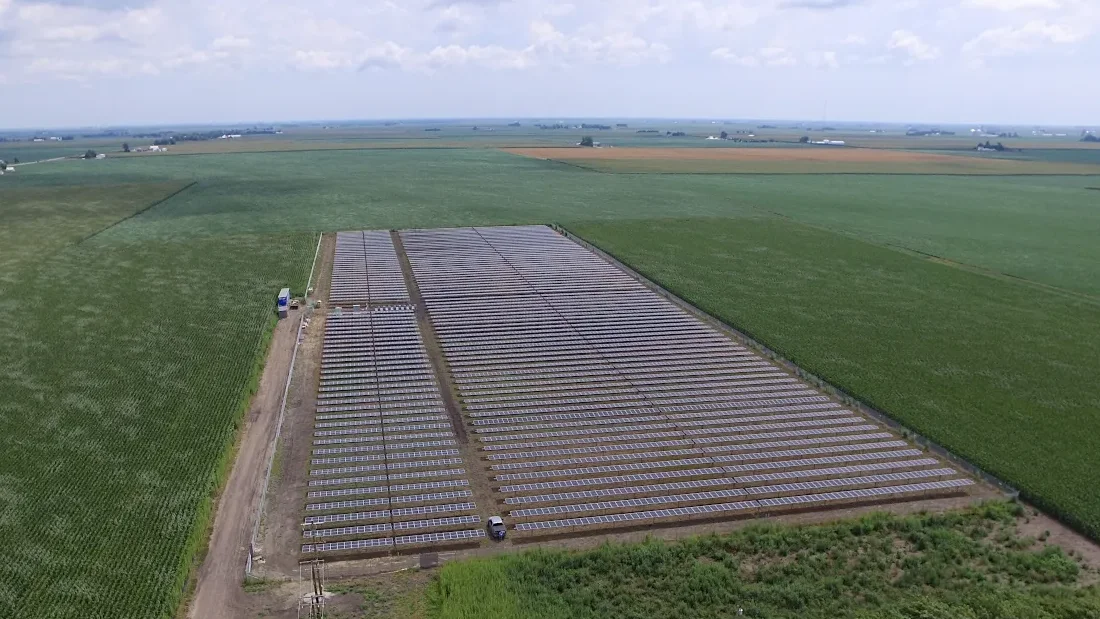
TRANSITION: An energy company’s plan to build an 800 MW solar farm on a 27,000-acre mountaintop removal mine site in Kentucky could become a model to repurpose environmentally disturbed sites in Appalachia for renewables. (Daily Yonder)
ALSO: Federal investigators will look into Appalachia’s “zombie mines,” where coal production has ceased but which companies say are “active” to avoid reclamation costs. (Inside Climate News)
GRID:
ELECTRIC VEHICLES:
SOLAR:
OIL & GAS:
CLIMATE:
UTILITIES: Arkansas power and natural gas utilities respond to state regulators’ questions about their plans to use federal funding for energy efficiency and grid infrastructure projects. (Arkansas Business)
POLITICS: Activists wielding leaf blowers gather outside the Virginia Capitol to lobby for legislation that would let local governments regulate gas-powered blowers. (Richmond Times-Dispatch)
COMMENTARY: An environmental justice advocate calls for pop star and real estate developer Pharrell Williams to consider the risk of climate gentrification to nearby Black neighborhoods as he moves forward with projects in coastal Virginia. (Daily Press)

Community solar could be an important tool to lower electricity bills and bring clean energy to low-income communities. But even as federal incentives aim to lower the cost of building community solar arrays, big issues still stand in the way, advocates tell the Energy News Network.
When a community solar array is built, people in the area can sign up to receive electricity that’s often cleaner and cheaper than what they’d get from their utility. It’s ideal for residents who can’t put solar on their own roofs because of installation costs or other reasons.
Incentives introduced under the Inflation Reduction Act aim to boost community solar, with extra tax credits slated for arrays that benefit low-income people and areas. But it’s not easy to qualify a household as low-income. The process varies from state to state, but it often requires that people provide tax returns and other documentation to prove their income — something that could make customers reluctant to buy in.
Federal law does try to tackle this problem by letting LIHEAP eligibility count as a measure of eligibility for low-income community solar bonuses. The low-income heating assistance program has been around for decades, so it’s more familiar to many people. States can also designate whole areas as low-income to smooth the process.
Read more about the challenges holding up community solar, plus some solutions that are rolling out, at the Energy News Network.
🚌 New school: The U.S. EPA announces nearly $1 billion in grants for schools to replace diesel buses with electric and low-emissions vehicles, with a vast majority going to schools in low-income, rural and tribal communities. (Guardian)
⚡ The grid’s big year: 2024 could be a make-or-break year for lawmakers, regulators and utilities to push through federal reforms aimed at making it quicker and easier to expand the power grid. (Canary Media)
💰 What’s stopping decarbonization: Upfront cost is the biggest barrier keeping people from making home energy upgrades like swapping out gas stoves, while lowering energy costs and environmental impact is a top motivator, a survey finds. (Canary Media)
🔋 The sunshine neighborhood: Every residence in an 86-home Florida development comes with solar panels and a home battery, ensuring none of its homeowners pay electric bills and offering a model for sustainable building. (Washington Post)
☀️ Solar tax swap: First Solar enters two deals to sell $700 million worth of federal tax credits, a first-of-its-kind transaction that will let the U.S. solar panel manufacturer quickly bring in money from domestic production incentives it could otherwise only use to trim its tax bill. (Canary Media)
🚙 Big cars, big emissions: Several automakers’ average fuel efficiency dropped from 2017 to 2022, largely because of the growing popularity of SUVs and pickup trucks. (Washington Post)
🔌 The EV incentives list is here: The federal government published a list of electric vehicles that qualify for $7,500 and $3,750 incentives, which can now be redeemed at thousands of dealerships. (Inside Climate News)
🏗️ Gas bans meet their end: A federal appeals court reaffirms its decision to strike down Berkeley, California’s ban on gas hookups in new buildings, invalidating other local gas bans in the 9th Circuit’s territory of 11 Western states. (Grist)
🥾 Electrifying tourism: An Alaska carbon offset program uses tourists’ donations to purchase electric heat pumps for local residents. (Grist)
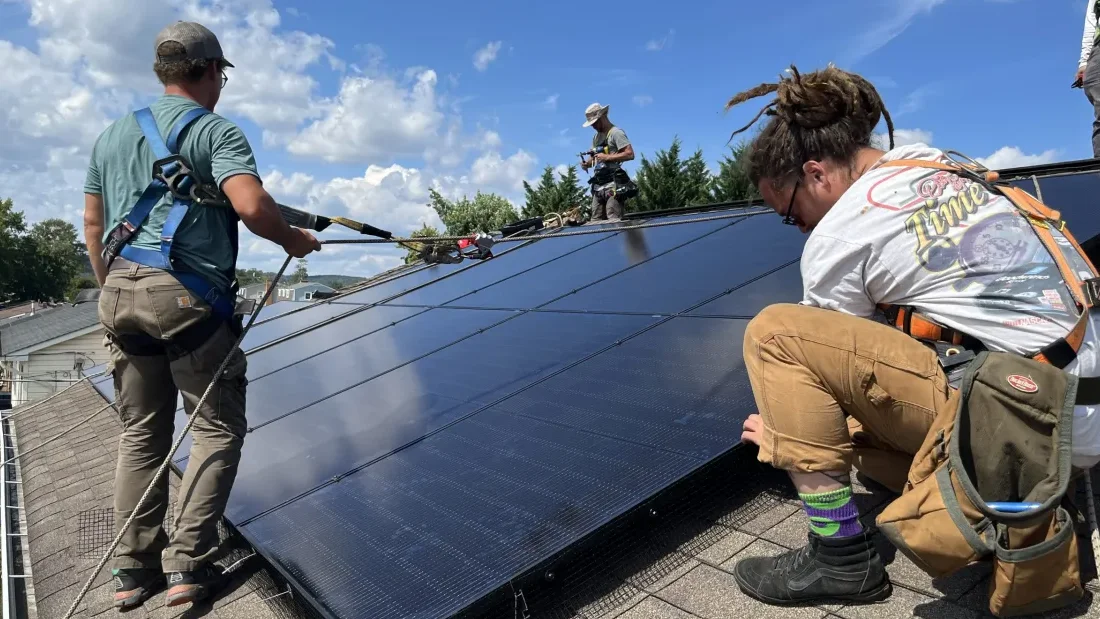
EQUITY: Low-income households could benefit most from clean energy upgrades such as heat pumps and solar panels but often don’t have access to financing or government incentives. (New York Times)
SOLAR: The U.S. Energy Information Administration predicts 79 GW of new solar capacity will come online through the end of 2025, potentially making it the top source of power growth over the next two years. (Utility Dive)
STORAGE: Federal analysts also predict energy storage on the grid will nearly double this year, from 17.3 GW now to 31.1 GW by December. (Canary Media)
OIL & GAS:
HYDROGEN: The Biden administration’s proposed hydrogen incentive rules place strict emissions limits on green hydrogen producers but lack standards for natural gas-sourced blue hydrogen. (Canary Media)
COAL:
ELECTRIC VEHICLES:
CLIMATE: Climate-fueled storms, flooding and rising sea levels are bound to drive coastal U.S. residents inland, but elderly people are likely to be left behind, a study finds. (Grist)
POLITICS: The planned departure of several longtime U.S. House and Senate members who have played key roles in energy policy raises concerns about brain drain with the loss of their institutional knowledge on issues. (E&E News)
COMMENTARY: A clean energy columnist calls on journalists to stop sensationalizing clean energy-related bird deaths, pointing to a study finding oil and gas drilling is more harmful to avians than wind turbines. (Los Angeles Times)

NATURAL GAS: An energy company shutters a natural gas power plant in southern California after a city lobbies for decades to have it decommissioned. (Daily Breeze)
ALSO:
OIL & GAS:
BIOFUELS: Portland, Oregon, approves three proposed biodiesel pipelines at a fossil fuel terminal on the Willamette River as part of a company’s agreement to phase out crude oil storage at the facility. (Oregonian)
POLLUTION:
SOLAR: California advocates ask an appeals court to rehear their challenge of the state’s new net-metering policy slashing compensation for energy generated by rooftop solar. (San Diego Union-Tribune)
CLIMATE: A federal report finds the waters off Alaska’s Aleutian Islands registered the warmest winter temperatures in over a century, making the ecosystem a “bellwether for climate change.” (Alaska Beacon)
ELECTRIC VEHICLES: Federal labor regulators accuse California electric vehicle startup Lucid of illegally firing two employees for joining the United Auto Workers union. (Los Angeles Times)
URANIUM: The federal Bureau of Land Management permits a uranium mining company to begin exploratory drilling just outside Bears Ears National Monument in southern Utah. (Mining Technology)
PUBLIC LANDS: The federal Bureau of Land Management seeks public input on a proposal to lift some environmental protections from 28 million acres in Alaska. (Nome Nugget)
COMMENTARY: A California energy columnist urges readers to see the world through “climate-colored goggles” because human-caused global warming is pressing, immediate and terrifying. (Los Angeles Times)